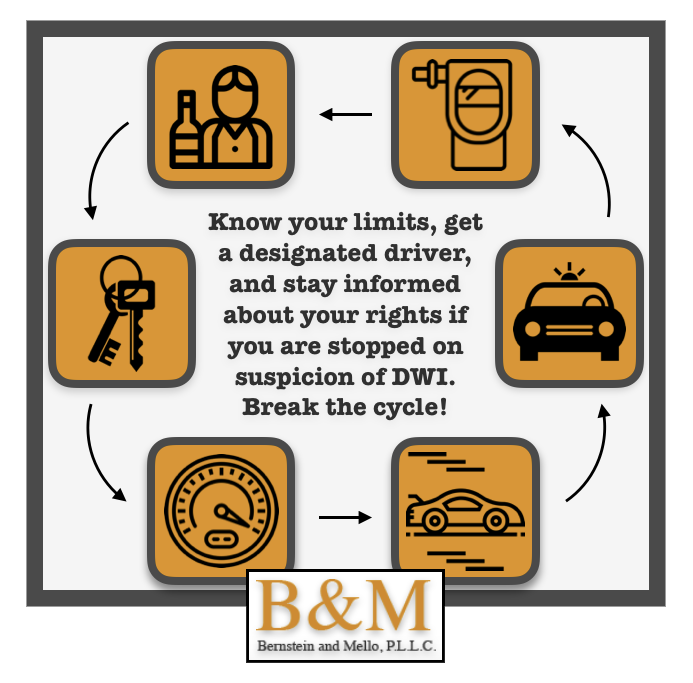In the state of New Hampshire and all surrounding states, it is a DWI offense to drive if you are found to have .08% BAC, or .04% as a Class D driver or .02 for any minor operating a vehicle. So what does BAC mean, and how does it work exactly? Join us as we explain the meaning behind the acronym.

So what does BAC stand for?
BAC stands for Blood Alcohol Concentration. Most people mistake the C for Content, which is only half the issue. A certain amount of alcohol for a 220lb person will have a far lower concentration in their BAC than the same amount for a 125lb person. Blood Alcohol Concentration looks at the measure of alcohol in a person’s blood stream.
What is the scale for BAC?
A BAC level is the primary method of seeing if a person is intoxicated. Usually this is done using a breathalyzer, because the alcohol levels present in a person’s breath are a proven match to a person’s blood concentration. For a rough measure of scale:
- BAC .001 – .029: Very light impairment and “loose” floaty feeling reported by consumers
- BAC .03 – .059: Diminished concentration, easily distracted
- BAC .06 – .099: Lowered or impaired reasoning, visual processing, and ability to adjust to light glare
- BAC .1 – .199: Dramatically compromised reflexes, response time, gross motor skills, and speaking
- BAC .2 – .299: Severe loss of motor skills, blacking out, memory loss
- BAC .3 or higher: Emergency room required; severe risk of respiratory compromise or poisoning death.
How can you tell your BAC?
Short of carrying a breathalyzer, there isn’t an easy way to calculate your BAC. Most online tools for calculating do not take into account things like stress levels, amount of food consumed, or what kind of alcohol it is (the “proof” of alcohol content.) Most importantly, those calculators cannot predict your health and wellness. Avoid these tools, since they can be misleading.
If you have doubts about driving or you have felt in any way altered after having even a single drink, don’t drive.
Alternatives to Driving Impaired:
- Call a Lyft, taxi, or a friend or family member to pick you up. Prepare ahead and make sure you have someone you can call.
- Remain where you are until you are completely sure you are sober. When in doubt, wait longer.
- Ask if someone leaving can give you a ride, if you feel safe doing so.
- Do not sit in the driver’s seat of your car while you sober up. Once seated, you are considered an operator, whether or not the car is on.
Struggling with a DWI charge? Contact Bernstein & Mello today for a consultation.



